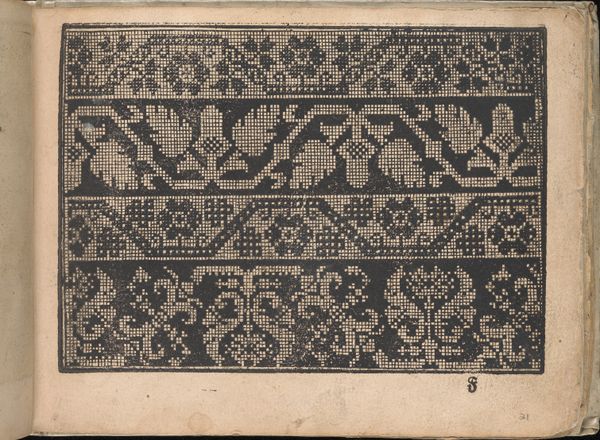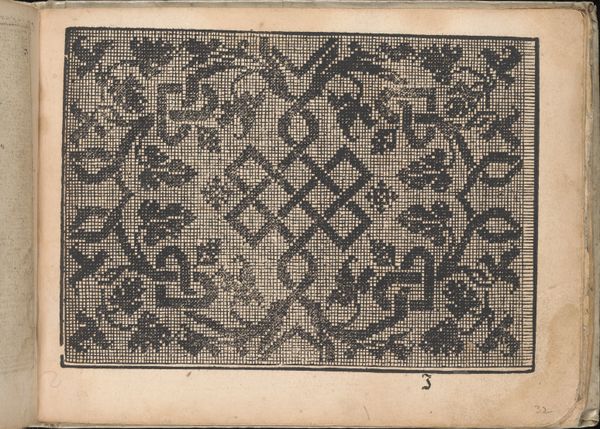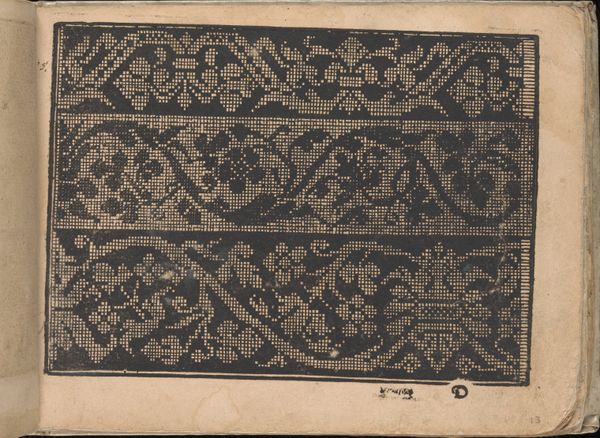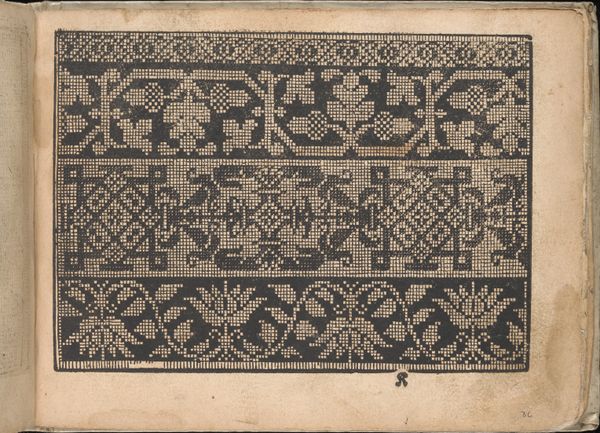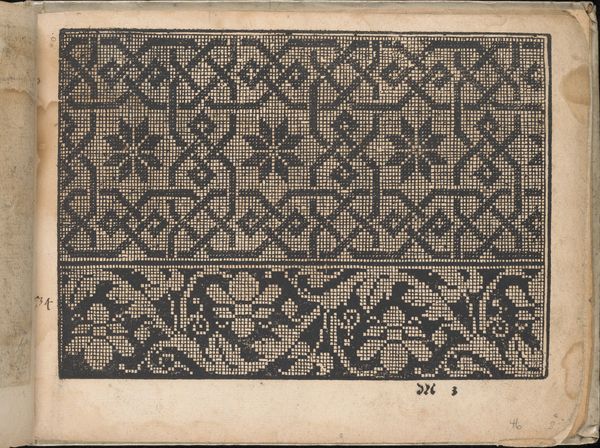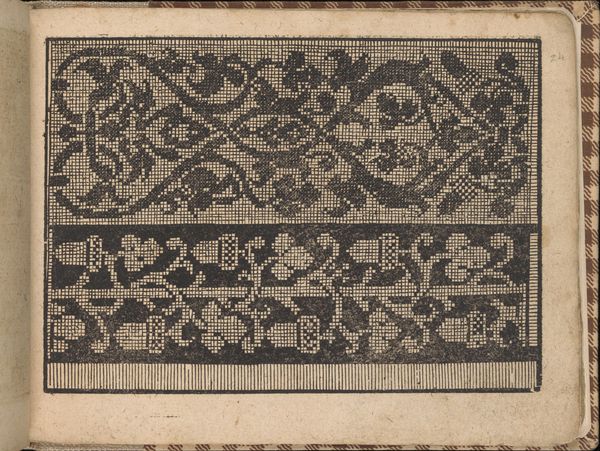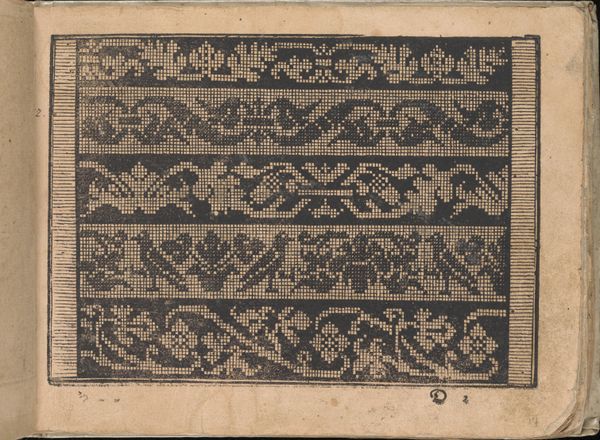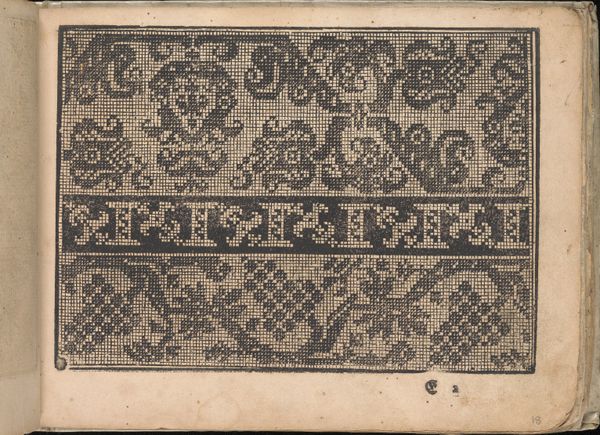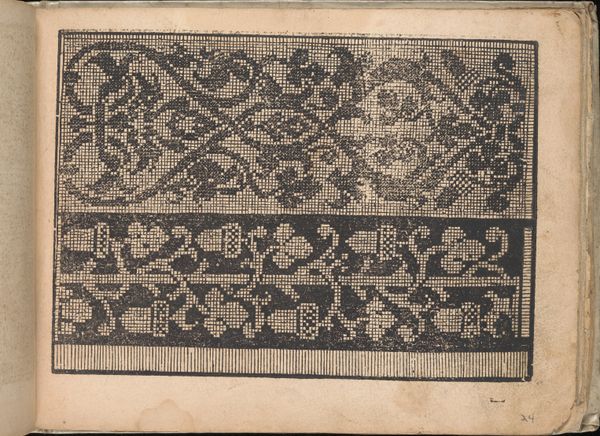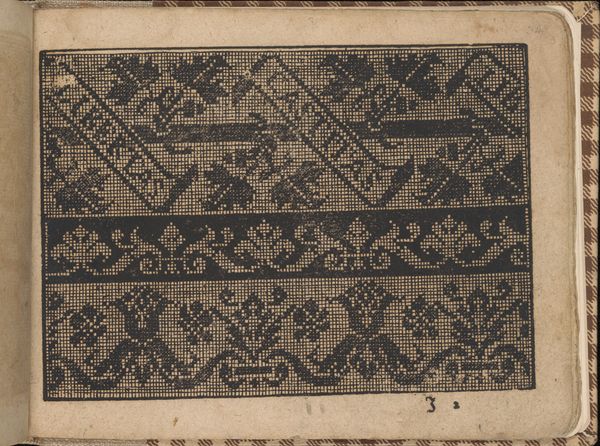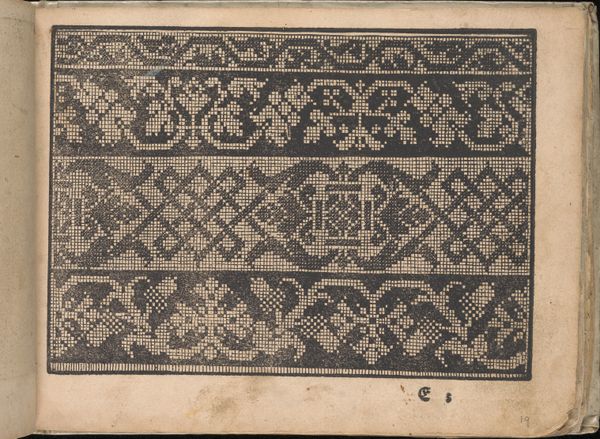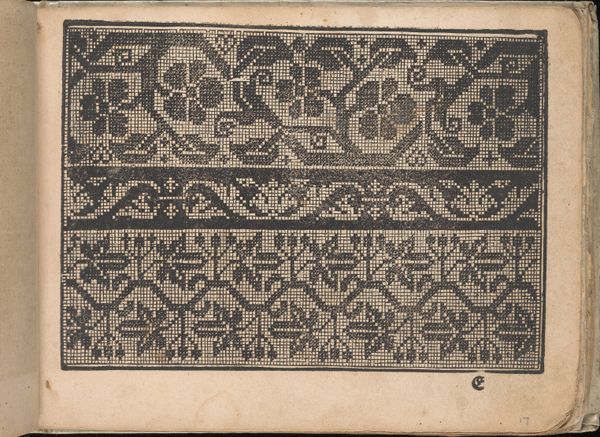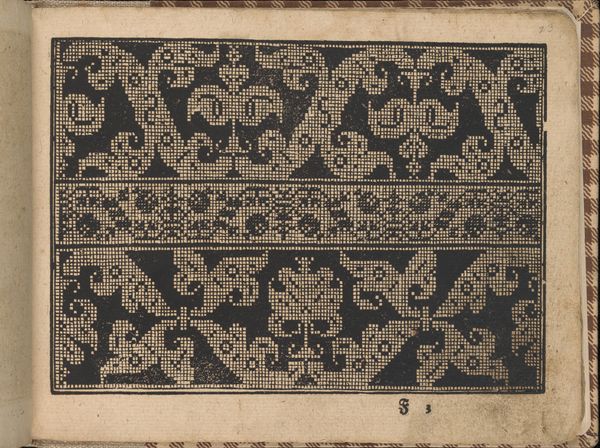
drawing, graphic-art, ornament, print, paper, woodcut
#
drawing
#
graphic-art
#
ornament
# print
#
pattern
#
paper
#
woodcut
#
northern-renaissance
Dimensions: Overall: 6 1/8 x 7 7/8 in. (15.5 x 20 cm)
Copyright: Public Domain
Curator: Oh, this reminds me of grandma's doilies... but way cooler! Editor: Indeed. We are looking at a page from "Neu künstlich Modelbuch," created around 1598 by Bernhard Jobin. It’s a woodcut printed on paper, showcasing designs meant as models for embroidery and other decorative arts. Currently residing here at the Met. Curator: Embroidery design! It does look like pixel art, only… handcrafted. It's so intricate, all those tiny dots making up leaves and geometric shapes. It must have taken forever. Editor: The overall effect is striking. Notice how Jobin uses the contrast of black ink on paper to articulate depth and texture. The patterns are laid out horizontally—three distinct registers of ornamental designs, each possessing unique rhythmic and spatial qualities. Curator: You're right! My eyes are dancing across those lines. The top section feels wilder, diagonal, and full of unexpected twists, and then the bottom one is all gentle curves, kinda calming actually. It’s like the artist had moods and each pattern had its own message. Editor: Semiotically, these aren't just "pretty patterns". They communicate status, wealth, skill. For women of the Northern Renaissance especially, producing needlework of this quality was a testament to their social standing and refined education. Curator: Imagine spending your days bringing these little dots to life with thread. It's meditative, right? I bet they dreamed up some great stories sitting there with their needles and threads! Like the best kind of daydreams, where every stitch brings the picture just a tiny bit more to life. Editor: These model books were powerful tools for standardizing taste and disseminating decorative trends throughout Europe. They represent the early days of mass-produced visual culture influencing personal creative expression. Curator: Whoa. So these seemingly humble patterns held the seed for entire social behaviors and identities back then! Who knew something so seemingly old fashioned could carry all that? It’s more than art; it’s like a whisper across centuries! Editor: Precisely. It allows us to see a visual shorthand, connecting the meticulous handcrafts of the past to the design sensibilities that shape our present. A simple pattern reveals so much.
Comments
No comments
Be the first to comment and join the conversation on the ultimate creative platform.
